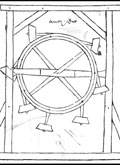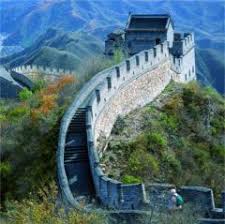Technology in the Medieval World


 The study of technology usually means to study practical or applied arts, but basically it concerns those artifacts that allow people to do more work more efficiently than they might otherwise have done. Thus the history of technology includes everything from stone tools to modern computers. While we are accustomed to rapidly adopting new technologies (our computer software is almost obsolete the moment we load it), the adoption of new technologies in the past was more complex than simple inventions. A new idea had to coincide with a perceived need, which often depended on other inventions to support it. For example, reading glasses were invented in the Middle Ages but did not spread widely until the printing press and better artificial lights gave more people more to read and more light to do so. Thus to study the progress of technology through history requires us to look closely at intersecting aspects of daily life.
The study of technology usually means to study practical or applied arts, but basically it concerns those artifacts that allow people to do more work more efficiently than they might otherwise have done. Thus the history of technology includes everything from stone tools to modern computers. While we are accustomed to rapidly adopting new technologies (our computer software is almost obsolete the moment we load it), the adoption of new technologies in the past was more complex than simple inventions. A new idea had to coincide with a perceived need, which often depended on other inventions to support it. For example, reading glasses were invented in the Middle Ages but did not spread widely until the printing press and better artificial lights gave more people more to read and more light to do so. Thus to study the progress of technology through history requires us to look closely at intersecting aspects of daily life.
One of the main impulses for the adoption (indeed, invention) of new technology is the lack of power to get things done. Through the ancient world, there were two main sources of power—human and animal. In places where there were large populations (Egypt, China, and India, for example), human labor sufficed for most of the work, even though people are less efficient. For example, people assumed it took about seven men to haul as much weight as one horse, but humans were more flexible. After hauling, people could be put to work to build walls, for example, where a horse could not.
Sources of energy also push invention. For example, in preconquest South America, Indians did not develop the wheel even though there were examples of wheeled miniature toys. Why build wheeled vehicles if there were no domestic animals to pull them or good roads? Wheeled vehicles would just mean that people would have to pull heavier loads than they could carry, which was not a good trade-off. Once again, technology is shaped by need and a complex series of available items.
A final determinant of technology is access to raw materials. In Polynesia, people had no metal tools, utensils, or nails. Thus their constructions were limited. Europe and Asia benefited not only from abundant raw materials but from sustained contacts that led inventions to spread. The Chinese invented things as simple and useful as the wheelbarrow, which spread to Europe in the 12th century, to things as complex as suspension bridges. Communication offered great advantage to the spread of technology.
The Byzantine Empire inherited the Romans' technological expertise and at the beginning of the Middle Ages was more advanced than lands farther west. They also had the advantage of being on the crossroads of trade with China and the Muslim world. Late in the Middle Ages, however, their political and economic situation interfered with advances in technology, and western Europe surpassed the Byzantine Empire.
Western Europe experienced a technological revolution in the Middle Ages, beginning in the 11th century. Unlike China, which had a large population to perform labor, Europe had a shortage of labor. Necessity stimulated the invention and wide use of wind and water power to supplement—and in many instances replace—human and animal power. Water mills in particular offered reliable sources of energy all along rivers; these wheels did everything from grinding grain to crushing minerals, pounding cloth, and even powering a mechanical saw that could more easily cut the great oak forests that supplied the materials for castles. Windmills appeared a bit later in Europe and China. They were probably invented in the Middle East, spreading first through Muslim lands.
Beyond power, the heart of the technology of the Middle Ages in Europe and Asia was iron. Iron smelting before the 19th century had remained roughly unchanged from its beginnings about 1200 BCE, when metallurgists learned that when iron is repeatedly heated in a hot charcoal furnace, carbon molecules combine with iron molecules to form a reliable metal known as carbon steel. The Chinese, however, had developed ways to smelt the ore at very high temperatures and led the world in producing cast iron and sharp blades. The Muslims quickly learned the techniques of sword making from Asia, and when Western crusaders confronted Muslim armies, their own pounded iron swords were clearly inferior to the Muslims', made of Eastern smelted steel.
The Vikings were in the forefront of technological advance when it came to their magnificent longboats, built to withstand the rough waters of the North Sea. Once again, we can see in this development that necessity yielded invention—these intrepid sailors did what they had to do to navigate their waters. The Middle Ages may look to the modern reader like an era of very low technology, when people all over the world worked hard with relatively simple tools. Yet this era produced a great technological revolution from China to Europe as people found new sources of energy to do work and new inventions to help them do it. Perhaps more than anything, they awakened the idea that technology could bring positive change—this is the idea that shapes our consciousness.
A final determinant of technology is access to raw materials. In Polynesia, people had no metal tools, utensils, or nails. Thus their constructions were limited. Europe and Asia benefited not only from abundant raw materials but from sustained contacts that led inventions to spread. The Chinese invented things as simple and useful as the wheelbarrow, which spread to Europe in the 12th century, to things as complex as suspension bridges. Communication offered great advantage to the spread of technology.
The Byzantine Empire inherited the Romans' technological expertise and at the beginning of the Middle Ages was more advanced than lands farther west. They also had the advantage of being on the crossroads of trade with China and the Muslim world. Late in the Middle Ages, however, their political and economic situation interfered with advances in technology, and western Europe surpassed the Byzantine Empire.
Western Europe experienced a technological revolution in the Middle Ages, beginning in the 11th century. Unlike China, which had a large population to perform labor, Europe had a shortage of labor. Necessity stimulated the invention and wide use of wind and water power to supplement—and in many instances replace—human and animal power. Water mills in particular offered reliable sources of energy all along rivers; these wheels did everything from grinding grain to crushing minerals, pounding cloth, and even powering a mechanical saw that could more easily cut the great oak forests that supplied the materials for castles. Windmills appeared a bit later in Europe and China. They were probably invented in the Middle East, spreading first through Muslim lands.
Beyond power, the heart of the technology of the Middle Ages in Europe and Asia was iron. Iron smelting before the 19th century had remained roughly unchanged from its beginnings about 1200 BCE, when metallurgists learned that when iron is repeatedly heated in a hot charcoal furnace, carbon molecules combine with iron molecules to form a reliable metal known as carbon steel. The Chinese, however, had developed ways to smelt the ore at very high temperatures and led the world in producing cast iron and sharp blades. The Muslims quickly learned the techniques of sword making from Asia, and when Western crusaders confronted Muslim armies, their own pounded iron swords were clearly inferior to the Muslims', made of Eastern smelted steel.
The Vikings were in the forefront of technological advance when it came to their magnificent longboats, built to withstand the rough waters of the North Sea. Once again, we can see in this development that necessity yielded invention—these intrepid sailors did what they had to do to navigate their waters. The Middle Ages may look to the modern reader like an era of very low technology, when people all over the world worked hard with relatively simple tools. Yet this era produced a great technological revolution from China to Europe as people found new sources of energy to do work and new inventions to help them do it. Perhaps more than anything, they awakened the idea that technology could bring positive change—this is the idea that shapes our consciousness.
Joyce E. Salisbury
Further Reading
Further Reading
No comments:
Post a Comment